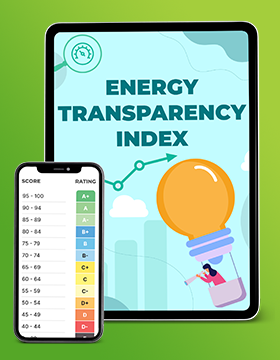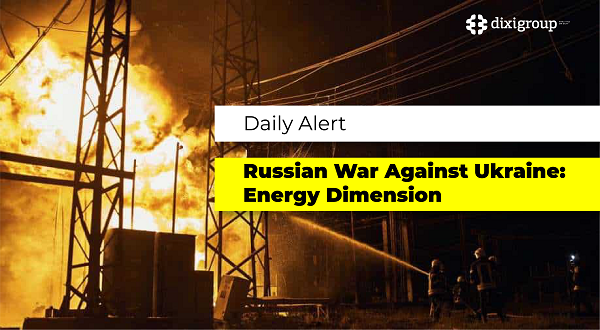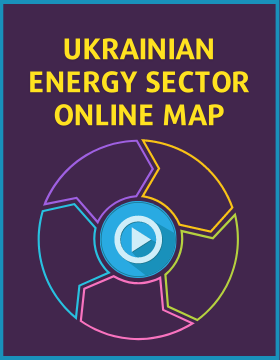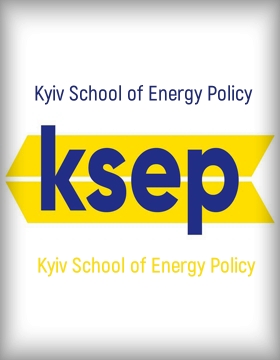Europe without Russian gas: challenges, myths and new routes
How new gas discoveries are changing the energy landscape of Europe and Turkey

In July 2025, Poland announced the discovery of one of the largest oil and gas fields in Europe in the last decade. Central European Petroleum (CEP), a Canadian-registered company partly owned by Norwegian investors, reported the successful drilling of the Wolin East 1 well in the Baltic Sea, about six kilometers from the port of Świnoujście. According to preliminary estimates, the field contains 22 million tons of oil and condensate, as well as about 5 billion cubic meters of natural gas. Total reserves within the Wolin license area could reach more than 33 million tons of oil and 27 billion cubic meters of gas.
This was reported by the TVP television company.
The discovery has already been called a historic moment for the Polish energy sector. “Wolin East is more than just a promising field. It is a joint opportunity to unlock the full geological and energy potential of the Baltic Sea,” said CEP CEO Rolf G. Skaar. In turn, Poland's Deputy Climate Minister and Chief Geologist Krzysztof Halos said: "If the discovery is confirmed, Wolin East could become the largest oil and associated natural gas field ever discovered in Poland."
The field is of strategic importance for Poland, which currently imports about 95% of its oil and a significant part of its gas. According to Euractiv, the discovery of Wolin East could double national oil production and increase gas production by 20%. This would significantly reduce the country's dependence on imports, especially in the context of the European Union's efforts to diversify its energy supply and reduce supplies from Russia.
At the same time, the discovery of the field has raised concerns among environmental organizations in Germany, which fear a negative impact on the marine environment of the Baltic Sea. Polish officials assure that all work is being carried out in accordance with environmental standards and the country's legislation.
Against the backdrop of the depletion of deposits in the North Sea and the growing demand for energy, the discovery of Wolin East could become a key element of Europe's new energy architecture. The EU has long been working to create a unified energy system that includes the development of offshore generation, in particular within the framework of the North Seas Energy Cooperation (NSEC) initiative. However, as EnergyTransition.org notes, the full integration of new energy sources requires deeper coordination between member states, infrastructure modernization and joint network planning6.
Thus, the discovery of Wolin East is not only a geological sensation, but also a geopolitical signal. Poland gets a chance to strengthen its energy independence, and Europe has another argument in favor of abandoning Russian energy sources. The successful implementation of this project could become an example of how national interests, investments and environmental responsibility can be combined in a new energy paradigm.
Geology vs. Geopolitics
The global exploration industry continues to impress with large-scale gas discoveries, even in difficult geopolitical conditions. For example, in recent years, the European and Eastern Mediterranean regions have been experiencing an active phase of discoveries of new large natural gas fields. The greatest successes are attributed to the discovery of significant reserves in Turkey (Black Sea) and offshore deposits on the shelf of Cyprus, which could become important strategic resources for the region and ensure energy diversification of Europe from Russian hydrocarbons.
In Turkey, the latest breakthrough occurred in May 2025: the state-owned company TPAO reported a new discovery of 75 billion m³ of gas in the Göktepe-3 well, which brings total gas reserves in the Black Sea to 785 billion m³. President Erdogan called it “the biggest discovery” — enough to meet the needs of households for 3.5 years. The economic value of the field is estimated at around $30 billion, Reuters reported.
Oguzhan Akiner, an expert at the Turkish Energy Strategies and Policies Research Centre, said Turkey is deliberately developing its production infrastructure to become a gas transit hub for Europe. He predicted that by 2026, daily production could reach 40 million m³/d, with domestic production meeting up to 30% of national consumption.
Cyprus has made numerous offshore discoveries: the Pegasus-1 field is the latest, a discovery in Block 10 in the eastern Mediterranean by the ExxonMobil-Qatar Energy consortium in August 2025. It is the sixth major discovery, following Glaucus-1 (≈3.7 trillion cubic feet), Cronos-1 (≈2.5 trillion cubic feet), Zeus, Calypso and Aphrodite (≈5.6 trillion cubic feet), AP News reported.
Analysts believe that developing these fields and integrating them into the EU energy grid could help reduce Europe's dependence on Russian gas.
In Romania, the Neptun Deep project in the Black Sea is estimated to be one of the EU’s largest future gas sources — with a potential of around 100 bcm of reserves, likely in production by 2027. Once launched, Romania could become the EU’s largest gas producer and a net exporter for the first time in history, Reddit reports.
In Austria, OMV announced the discovery of the Wittau Tief-2a gas field — the largest in 40 years, with reserves of ≈48 TWh (~28 million barrels of oil equivalent). This is expected to increase domestic gas production by 50%.
The global gas industry is not standing still around the world.
Thus, in 2022, Egypt discovered the Nargis field in the Mediterranean Sea with an estimate of approximately 3.5 trillion cubic feet of gas. This result was one of the largest since the discovery of the Zohr field in 2015.
In Cyprus, Eni discovered the Cronos-1 field in Block 6 with a preliminary estimate of about 2.5 TCF of gas. Colombia - a giant update: resource increases at the Gorgon-2 + Uchuva-1 field (Petrobras) confirmed significant gas reserves in the Tayrona Block. In Guyana, ExxonMobil (Stabroek Block) discovered several fields at once - Kiru Kiru and Seabob - continuing a series of discoveries with a potential of 11 billion barrels of oil equivalent (BOE), partly gas volumes. In Namibia, the Venus field was found, which could become the largest deepwater discovery with up to 13 billionBOE, including most of the gas.
In Indonesia, in 2023, SKK Migas announced two of the country’s five largest discoveries, Geng North-1 (≈5 TCF) and Layaran-1 (>6 TCF), which are among the world’s top 5 gas discoveries.
In 2024, CNOOC announced a major gas breakthrough in the South China Sea, a field near Yulin (Shaanxi) estimated to contain over 100 billion cubic meters of gas.
In Colombia, in October 2024, Ecopetrol and Petrobras announced two major discoveries: Sirius-2 (daily production up to 13.3 million m³ by 2029–2030) and Papayuela with a potential of 800 million m³ per day (~80% of national demand).
In addition, other regions — in particular, the Middle East (UAE, Kuwait), Malaysia, Congo — also made significant discoveries in 2023–2024, which increased total global gas reserves by huge amounts, according to the Esgian research platform.
Since 2022, world energy resources have grown significantly, and the gas fields of the new millennium are located not only in traditional countries, but also in new regions. The largest discoveries are in Iran, Namibia, Colombia, Indonesia, Cyprus, Egypt and Guyana. In total, dozens of fields with trillions of cubic meters of reserves have been discovered, which will significantly affect the energy map of the planet.
Kremlin narratives
Since the beginning of the year, a number of Western media outlets have been talking about the threat of a global gas crisis associated with the cessation of the transit of Russian gas through the territory of Ukraine. Bloomberg, Reuters, and the Financial Times then ran articles claiming that the world was on the brink of an energy apocalypse that could only be averted by bringing Russian pipeline gas back to the European market. These narratives increasingly resembled an information campaign aimed at rehabilitating Russia’s role as a key energy supplier.
A January Bloomberg article suggested that the world was preparing for a fight over natural gas supplies, and that the cessation of transit through Ukraine could be a catalyst for a conflict between Europe and Asia over access to resources.
Reuters, in turn, reported on the continuation of negotiations between the European Commission and Ukraine on gas supplies, focusing on the positions of Hungary and Slovakia, countries that have traditionally demonstrated loyalty to the Kremlin.
The most resonant was the Financial Times publication of January 30, which, citing unnamed European government officials, reported on discussions about the possible resumption of Russian gas imports as an argument in the settlement of the war in Ukraine. The article noted that such conversations were being held among certain officials in Germany and Hungary, as well as against the background of attempts by the prime ministers of these countries to thwart another extension of sanctions against Russia.
These publications, despite their formal neutrality, actually broadcast pro-Russian messages, in particular, that it was Ukraine that allegedly blocked Europeans' access to cheap gas, forcing them to compete with Asian countries. On the night of January 1, the agreement on the transit of Russian gas through the Ukrainian gas transportation system was suspended. This resulted in the loss of about 15 billion cubic meters of gas per year for Russia, which on the European market with high prices is equivalent to approximately $6 billion in lost profit. European consumers, accordingly, lost part of the supply of pipeline gas, which was cheaper than alternatives. However, as analysts note, Russia has long ceased to be a monopolist in the European market. Its dominance is preserved only in certain countries, such as Hungary and Slovakia, where authoritarian regimes are effectively subsidized by Russian energy.
According to Bloomberg, these countries may face difficulties in finding alternative fuels, which, in turn, will provoke competition between Europe and Asia for access to gas. The publication predicts that this may lead to an increase in world prices and the formation of a global fuel crisis, which will hit low-income countries the hardest — such as Egypt, India, Bangladesh and the countries of South America.
Thus, despite the loud headlines in the international media since the beginning of the year, the real picture looks different in half a year. Europe is gradually adapting to new conditions, and Ukraine is not the source of the crisis, but on the contrary, one of the factors of its containment. Everything depends on political will — both in Kyiv and in Brussels.
In recent months, publications that directly or indirectly broadcast narratives about the need to return Russian gas to the European market have increasingly appeared in the Western media. These messages are presented under the guise of analytics, but their tone and choice of sources indicate an attempt to create the impression in the public that without Russian pipeline gas, the world energy system will collapse. As Volodymyr Omelchenko, director of energy programs at the Razumkov Center, notes, “competition for resources has always been part of the global market, and whoever offers a higher price will get more. However, he does not expect the situation on the gas market to change significantly in 2025 compared to 2024. The Ukrainian GTS did not flow in such large volumes. Only 15 billion cubic meters. This is nothing at all for Europe, where gas consumption is over 300 billion cubic meters per year. The EU has significant opportunities to reduce consumption thanks to “green” energy, and LNG supply schemes have also been established — from the same USA, where production is growing, and a new LNG liquefaction terminal has just been built. A similar terminal has also recently been launched in Senegal. Traditional supplies from Qatar, Norway, and the countries of North and Central Africa will also remain. That is, there is enough gas for everyone.”
India is currently developing rapidly, and Egypt has its own gas. Gas production is also growing in South America. For example, in Brazil and Guyana.
At the same time, experts admit that apocalyptic predictions have some basis. The world gas market has indeed become global, and any imbalance between supply and demand can affect prices. But it is precisely the globalization of the market, in particular the development of LNG infrastructure, that allows us to quickly compensate for the deficit.
“A world gas market has already been formed. Previously, it was regional, but now it has become global. Now the buyer can order gas shipments from any country in the world where there is an LNG terminal,” explains Omelchenko.
Instead, a more pressing problem for the EU is the lack of gas storage capacity. This forces Europeans to buy gas even during peak seasons, when prices are highest, instead of stocking up in the summer.
“The total capacity of gas storage facilities in the EU is only about 120 billion cubic meters. At the beginning of the autumn-winter period, they were about 95% full,” says Omelchenko. He adds that Europeans could use Ukrainian storage facilities more actively, but are afraid to do so because of the war.
The EU is moving towards energy independence
The European Union has published a plan to completely abandon Russian energy resources - oil, gas and nuclear fuel. The new stage of the REPowerEU strategy provides for the final cessation of imports of Russian gas from the beginning of 2026, and oil - by the end of 2027. At the same time, temporary exceptions have been made for certain Central European countries that depend on pipeline supplies and do not have access to sea terminals.
Despite the declared rejection of energy dependence, according to analysts from the Center for Research on Energy and Clean Air (CREA), in 2024 the EU countries spent more on the purchase of Russian oil and gas than they provided to Ukraine in the form of financial assistance. In particular, the cost of energy imports from the Russian Federation amounted to almost 22 billion euros, which is 17% higher than the amount of financial support provided to Kyiv over the same period.
This imbalance is worrying among experts, because Russia's profits from oil and gas exports remain a key source of financing for military operations. CREA analysts insist: any continuation of imports is a de facto promotion of aggression. Despite the sanctions pressure, the Russian Federation earned about 242 billion euros in fossil fuel exports in 2024, and this amount is approaching a trillion since the start of the full-scale invasion of Ukraine.
Economists say the EU has the tools to reduce these flows, including by closing loopholes in the sanctions regime. These loopholes include importing Russian oil that is refined in third countries, and transporting gas through pipelines such as TurkStream.
However, according to Rystad Energy, Russia retains the status of one of the leading suppliers of liquefied natural gas (LNG) to Europe. This indicates that the path to true energy independence is far from over. And although the political will has been declared, economic practice remains controversial.
Against this background, it is important not only to adopt resolutions, but also to ensure their effective implementation in order to prevent the re-strengthening of Russia's energy influence on European markets.
Russia reduces production
It became known these days that the company that produces Labubu dolls turned out to be more expensive than the Russian Gazprom. As of July 22, 2025, the value of Pop Mart was $42.4 billion. Gazprom was estimated at several billion cheaper - $38.8 billion.
This is evidenced by data published on the specialized resource Companies ranked by Market Cap.
In February 2025, Russia recorded a significant drop in natural gas production - by 11.3% compared to the same period last year. The total production volume amounted to 57.2 billion cubic meters, Russian media reported, citing sources in the Russian Ministry of Energy. In January, the decrease was less noticeable - about 3%, but in two months of the year the total figure decreased by 7.3%, to 131 billion cubic meters.
Already in July it became known that the volume of gas production in the Russian Federation has been decreasing at a double-digit rate for the second year in a row, and compared to pre-war levels, it has fallen by 24%, according to Rosstat statistics. In May, according to official data, 48.2 billion cubic meters of gas were produced in the country, while in the same month of 2022 - 57.5 billion, and in the pre-war May of 2021 - 63.1 billion cubic meters.
“The situation should be considered exclusively in the context of the so-called “special operation”, because its military part under the slogan “Kyiv in three days” was a forceful instrument of coercion to fulfill the ultimatum “Return NATO to the borders of 1997”, and the gas war under the slogan “Let Europe freeze” was the economic component of the same coercion. In fact, it was an all-out game, since no option to negotiate was envisaged. Europe repelled the gas attack and put Gazprom in its current extremely threatening position. And it was Europe (together with NATO, i.e. the USA) that repelled the military part of the ultimatum coercion — with the same result. According to Western sources, the Kremlin has deployed more than 90% of all its armed forces in the combat zone and has actually lost the ability to adequately respond to any threats from other directions. By all indications, this is a military defeat,” writes Russian columnist and blogger Anatoly Nesmiyan.
According to him, thus, the Kremlin is unable to threaten either in the economic or military dimension, which actually demonstrates its real place in global affairs. A country that is unable to project force even in a regional conflict is automatically excluded from the number of leading world powers.
"Russia during Putin's time won regional conflicts with weak third- and fourth-tier states, but now it doesn't matter at all, since neither the gas war with Europe nor the hostilities in Ukraine have brought the Kremlin any positive results. The negative is obvious, and with the positive, everything is extremely bad. The problem is that the further continuation of both conflicts — economic and military — threatens to destroy both the economy and the country's defense system. But for obvious reasons, the Kremlin will now go to the end, destroying its country to the foundation," the columnist believes.
Olena Marchenko, specially for "Ukrainian Energy"








